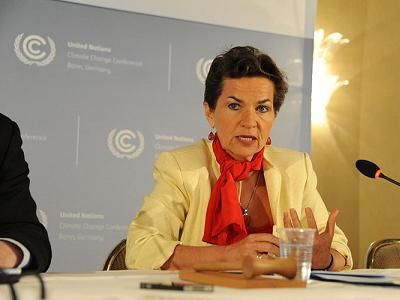UN climate chief says there is “no space” for new coal
Christiana Figueres highlighted the benefits of ambitious clean energy targets after a meeting with officials from seven Australian governments

Christiana Figueres, the UN climate chief, said there is “no space” for new coal development and highlighted the benefits of ambitious clean energy targets after a meeting with officials from seven Australian governments.
Held in Adelaide and organised by the South Australian government, the meeting brought together federal, state and territory administrations who agreed to collaborate further to scale up clean energy capacity, enhance energy-efficiency and improve climate change adaptation.
As executive secretary of the United Nations Framework Convention on Climate Change (UNFCCC), Figueres called on the Australian states and territories to assist the federal government to help deliver a strong global deal at the UN COP21 negotiations in Paris at the end of the year.
Attendees included the environment ministers of the Labor-run states and territories – Victoria, South Australia, Queensland and the ACT.
Officials from the Tasmanian, New South Wales, and federal government attended with Western Australia and the Northern Territory absent.
Figueres warned of the dangers of the world exceeding 2°C of warming compared with pre-industrial levels.
The UN climate chief called for Australia to reach national consensus to achieve a “maximum possible effort” in the battle to avoid dangerous climate change.
Asked about the countries reported lack of enthusiasm for ambitious carbon emissions reductions, Figueres said: “like the oceans, there are ebbs and flows about everything. We welcome that the federal government is turning in its national target by July and I’m confident it will encompass what the states and territories are doing,” she said. “I’m confident we will be pleasantly surprised.”
Australia’s federal government has begun consulting over emissions reduction targets beyond 2020, which will be the main focus of the COP21 climate meeting.
Estimates released by the CSIRO and Bureau of Meteorology in January found that Australia is on course to have an average annual temperature 1.3°C higher in 2030 than the average recorded between 1986 and 2005.
The temperature increase will be accompanied by an increasing occurrence of extreme droughts and reduced rainfall in the southern portion of the country, according to the estimates.
Australia could warm by more than 5°C by 2090, compared with pre-industrial levels, if insufficient efforts are made to cut greenhouse gases emissions.
The country experienced its warmest and third warmest years on record in 2013 and 2014 respectively and has already warmed by 0.9°C since 1910.


